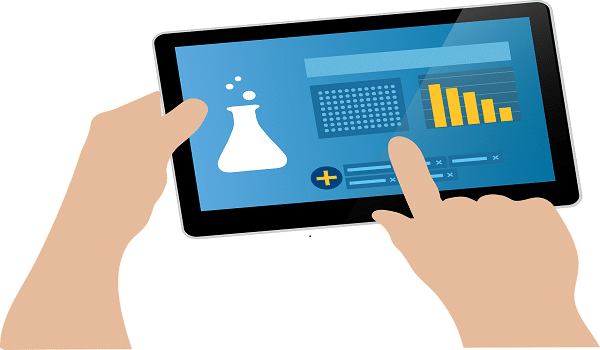How can you transform a chaotic production workshop into an ultra-high-performing environment where every employee knows exactly what to do, when, and how? The answer lies in visual management in production workshops, a revolutionary approach that instantly reveals the state of your production. Faced with current industry challenges – increasing process complexity, cost pressure, heightened quality requirements – companies are seeking concrete solutions to optimize their performance. Visual management precisely addresses these needs by making the invisible visible: problems, malfunctions, improvement opportunities.
This proven method enables immediate identification of deviations, drastically reduces reaction times, and involves all stakeholders in continuous improvement. Let’s discover together how this approach can transform your production workshop.

Key takeaways regarding visual management in production workshops:
- Immediate visualization: Instantaneous identification of problems and improvement opportunities
- Error reduction: Significant decrease in defects and non-conformities
- Enhanced engagement: Active involvement of teams in continuous improvement
- Optimized performance: Measurable increase in productivity and efficiency
- Necessary digitalization: Evolution toward digital tools to maximize benefits
1. What is Visual Management in Production Workshops?
Visual management in production workshops represents a revolution in modern industrial management. Indeed, this approach radically transforms how teams perceive and interact with their work environment.
Consequently, understanding its foundations becomes essential for any company wishing to optimize its performance.
1.1. Definition and Key Principles of Visual Management
Visual management constitutes a communication system based on simple and universal visual signals. Moreover, this method enables:
- Real-time communication of production status
- Instantaneous identification of anomalies and malfunctions
- Standardization of processes and procedures
- Facilitation of rapid decision-making
Nevertheless, its effectiveness relies on four fundamental principles:
- Simplicity: Clear messages understandable by all
- Universality: Visual codes recognized by all team members
- Real-time: Information updated continuously
- Actionable: Exploitable data for decision-making
1.2. What are the Objectives of Visual Management in an Industrial Environment?
Visual management in industrial environments pursues several strategic objectives. First, it aims to create a culture of total transparency. Next, it facilitates communication between all hierarchical levels.
Main operational objectives:
- Reduce unplanned downtime
- Improve reactivity to problems
- Optimize information flow
- Strengthen field team autonomy
2. What are the Concrete Advantages of Visual Management for Your Workshop?
The implementation of visual management concretely transforms production performance.
Thus, benefits materialize rapidly through measurable indicators. However, these advantages far exceed simple productivity gains.
2.1. How Does Visual Management Improve Productivity and Efficiency?
Visual management boosts productivity through several optimization levers. First, it eliminates time losses related to information searching. Second, it accelerates operational decision-making.
Measured productivity gains:
- Reduction in changeover times
- Increase in overall equipment effectiveness (OEE)
- Decrease in information search time
- Improvement in intervention planning
2.2. How Does Visual Management Reduce Errors and Costs?
Process visualization drastically reduces human errors. Furthermore, it enables early detection of malfunctions. Additionally, this approach generates substantial savings.
Impact on cost reduction:
- Decrease in product non-conformities
- Reduction in quality costs
- Decrease in corrective intervention times
- Optimization of work-in-progress inventory
2.3. How Does Visual Management Strengthen Employee Engagement?
Employee engagement improves significantly with visual management. Indeed, this method empowers every production stakeholder. Likewise, it values individual and collective contributions.
Benefits on engagement:
- Increased team autonomy
- Improved cross-functional communication
- Recognition of improvement initiatives
- Development of team spirit
3. What are the Essential Tools of Visual Management in Production?
Visual management tools constitute the operational foundation of this approach. Indeed, their selection and implementation determine the success of the initiative. However, their effectiveness depends on adaptation to each production workshop’s specificities.
3.1. How to Implement the 5S Method?
The 5S method represents the foundation of industrial visual management. First, it structures the work environment. Then, it establishes the bases for continuous improvement.
The 5 stages of 5S:
- Seiri (Sort): Eliminate unnecessary items from the workspace
- Seiton (Set in order): Organize and arrange efficiently
- Seiso (Shine): Maintain cleanliness and order
- Seiketsu (Standardize): Formalize rules and procedures
- Shitsuke (Sustain): Maintain discipline and improvement
3.2. What Visual Dashboards Should Be Used to Monitor Performance?
Visual dashboards translate complex data into exploitable information.
Notably, they enable real-time production management. However, their design must respect principles of simplicity and clarity.
Recommended dashboard types:
- Real-time performance indicators
- Production objective tracking
- Quality and maintenance alerts
- Improvement suggestion board
3.3. How to Effectively Use Signage and Color Codes?
Signage and color codes facilitate navigation and understanding. Simultaneously, they accelerate decision-making. Nevertheless, their standardization remains paramount to guarantee their effectiveness.
Coding principles:
- Red: Danger, stop, non-conformity
- Yellow: Caution, preventive maintenance
- Green: Normal operation, conformity
- Blue: Information, procedures
4. How to Implement a High-Performance Visual Management System?
Implementing a visual management system requires a methodical and progressive approach. Thus, success depends on rigorous planning and appropriate support. However, certain steps prove crucial to guarantee team adoption.

4.1. What are the Key Steps to Deploy Visual Management?
Visual management deployment follows a logical progression in several phases.
First, existing situation analysis identifies improvement opportunities. Next, visual tool design responds to specific identified needs.
Deployment roadmap:
- Phase 1: Diagnostic and objective definition (2-3 weeks)
- Phase 2: Visual tool design (3-4 weeks)
- Phase 3: Pilot in test zone (4-6 weeks)
- Phase 4: Progressive deployment (8-12 weeks)
- Phase 5: Stabilization and continuous improvement (ongoing)
4.2. How to Involve Teams in Visual Management Implementation?
Team involvement constitutes the key success factor for visual management. On one hand, it guarantees change acceptance. On the other hand, it enriches the solution through field expertise.
Involvement strategies:
- Team training and awareness
- Co-construction of visual tools
- Designation of ambassadors per team
- Implementation of participatory working groups
4.3. What Pitfalls to Avoid During Visual Management Implementation?
Certain pitfalls can compromise deployment success.
Consequently, their preventive identification avoids costly malfunctions. Moreover, anticipating these difficulties facilitates change management.
Common pitfalls to avoid:
- Visual information overload
- Lack of user training
- Absence of data updates
- Unanticipated resistance to change
5. Why and How to Digitalize Your Visual Management?
Visual management digitalization represents the natural evolution of this approach. Indeed, digital technologies multiply optimization possibilities. However, this transformation requires deep strategic reflection on tools and methodologies to adopt.
5.1. What are the Limitations of Traditional Visual Management?
Traditional visual management presents several constraints limiting its potential. Notably, manual information updates generate delays and errors.
Moreover, the absence of traceability complicates performance analysis.
Main identified limitations:
- Time-consuming manual updates prone to errors
- Static data not reflecting real-time reality
- Difficulties accessing historical information
- Lack of interactivity and personalization
5.2. What are the Advantages of Visual Management Digitalization?
Digitalization radically transforms visual management efficiency. First, it automates data collection and updates. Second, it enables real-time management with automatic alerts.
Digitalization benefits:
- Real-time data with automatic updates
- Intelligent alerts and proactive notifications
- Complete traceability and data historization
- Mobile accessibility and ERP system connection
5.3. How Does Picomto Revolutionize Digital Visual Management?
Picomto offers a complete digital visual management solution adapted to Industry 4.0. Indeed, this platform integrates all tools necessary for modern visual management. Furthermore, it perfectly adapts to contemporary production workshop requirements.
Key Picomto functionalities:
- Interactive digital work instructions
- Customizable real-time dashboards
- Automatic alert notifications
- Native integration with existing systems
Conclusion
Visual management in production workshops constitutes an essential optimization lever for modern industry. This approach enables significant productivity improvement, error reduction, and team engagement strengthening. However, its digitalization now becomes indispensable to maximize its benefits.
Don’t wait any longer to transform your production workshop. Picomto accompanies you in this digital transformation to optimize your performance and prepare your future industry.
FAQ
What are the 4 guiding principles of visual management?
Simplicity, universality, real-time, and actionable constitute the four fundamental principles of effective visual management.
What is visual management?
A communication system based on visual signals to manage and optimize production performance.
How to manage a production workshop?
Use visual tools, standardize processes, involve teams, and continuously measure performance.
How to create good visual management?
Respect simplicity principles, train teams, maintain






Leave A Comment